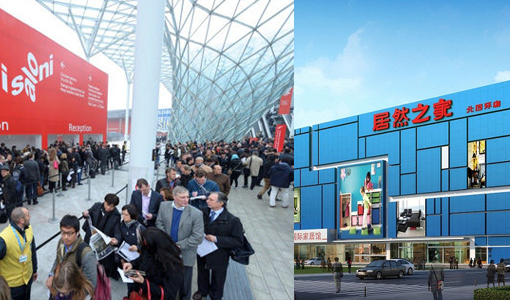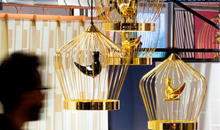Italy’s furniture manufacturers are in an upbeat mood as they look forward to the 56th edition of the Milan Furniture Fair from April 4-9: there will be more than 2,000 exhibitors (of which 30% are foreign), occupying over 200,000 square meters of display space, bringing in more than 300,000 expected visitors from 165 countries.
International vocation
Interior design and furniture (and wood and furniture, in general) over the course of the past year has managed to build on a recovery that began in 2015 with the domestic market, but has been bolstered in particular by lively foreign sales.
“We are seeing the results of our internationalization strategy, which we decided to launch back in 2011,” states Roberto Snaidero, President of the Furniture Fair and Federlegno, “when it was clear that the domestic market was in full stagnation. This strategy was composed of foreign events, B2B missions, and incoming buyer operations, all made possible thanks to the support of the Italian Trade Agency (ICE) and the Ministry for Economic Development, which is currently led by Carlo Calenda.”
Over the first ten months of 2016, Italian furniture exports throughout the world brought in more than €11 billion in sales, with France, Germany, and the United Kingdom as the principal outlet markets, and the United States and China as engines for growth: exports to the US (+8.1%) exceeded €1 billion, while exports to China topped €300 million—growing by 18.4% between January and October.
The Milan Furniture Fair or Salone del Mobile is the prime showcase and opportunity-creator for Italy’s design and furniture manufacturers. Last year, almost 70% of the professional sales agents came from abroad. This is confirmed by the data, expectations, and signs of recovery, which began in 2015 and became consolidated in 2016.
The 2017 Fair
The 2017 edition will center around the Euroluce biennial (dedicated to lighting), and Workplace 3.0, which will host furniture and office systems companies and which (since 2013) has offered an improved concept, designed to respond to changes in the working world.
After the installations designed by Jean Nouvel and Michele De Lucchi, this year’s climactic event at the biennial was awarded to Cristina Cutrona. In her show, “A Joyful Sense at Work.”she explores these changes through installations featuring four international architecture projects (American, Dutch, Iranian, and Italian).
With around 10,000 square meters of space and exhibitions from 92 companies, Workplace 3.0 will be a testament to the sector’s recovery, explained Assufficio President Marco Predari.
This sector in particular, as a part of the interior design division, has suffered the most from the crisis over the past few years: “Production is back above €1 billion in turnover,” states Predari, “thanks above all to exports, which have shown upwards of 30% increases in the USA and the United Kingdom, crucial markets for capturing large international commission contracts.”
Sales in France have also performed well, confirming Italy’s neighbors as the number one partner for Italian companies.
The Milan Connection
With consistently strong, tight, and unbreakable ties to the city of Milan, the Furniture Fair has set the standard for such events; it has always shown its ability to integrate the trade show business with cultural/entertainment events throughout the city.
This year, the Fair will be the main course in a springtime smorgasbord, packed full of events around Milan. Mayor Giuseppe Sala elaborated the details: it starts with MiArt and Art Week, leading into the Furniture Fair, the International Travel Exhibition, the new “Tempo di Libri” book show, and ends (in May) with Food Week—following the strategy of having the normal Fair and a “Fuorisalone” (fringe fair), which has greatly contributed to the success of Design Week.
The idea is an “open city,” explained the mayor, which promotes its excellence (above all, in design, fashion, and food) and creates a positive effect on the city’s image—and its tourism numbers, as well. In 2016, the number of visitors didn’t just hold steady—it increased, even in comparison with the Expo Milano 2015 year: a 2% growth which, for the months of November and December, skyrocketed to +20%.
(Source: italy24.ilsole24ore.com/)
























 沪公网安备31010402003309号
沪公网安备31010402003309号